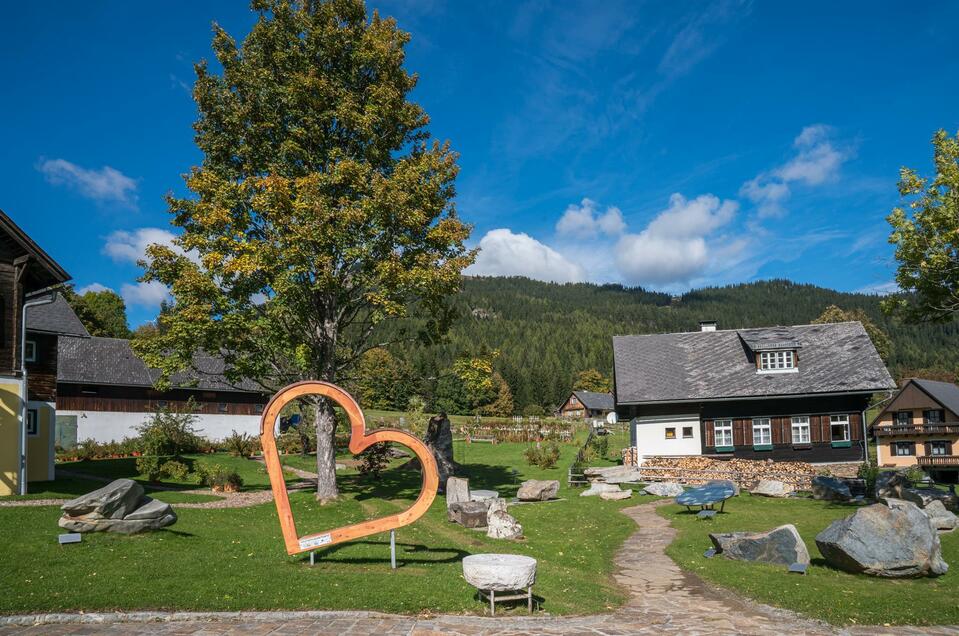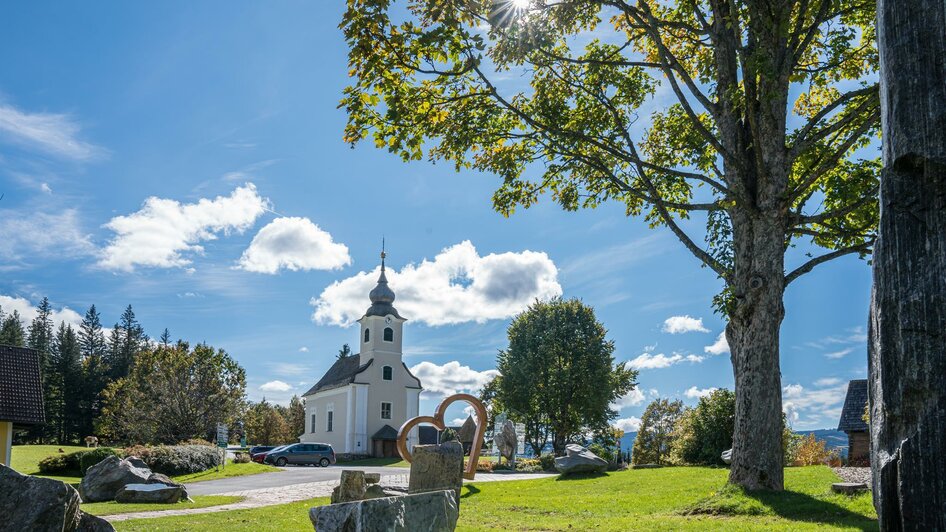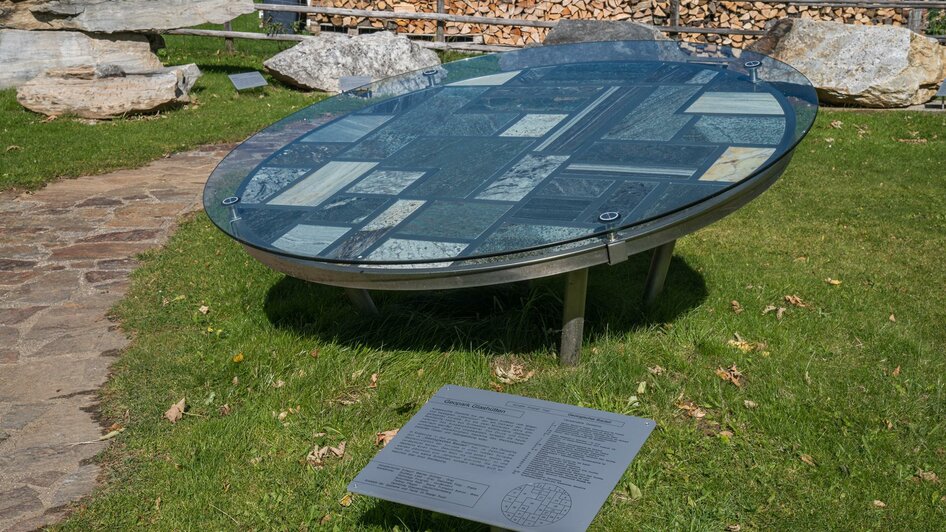Geopark Glashütten
Bad SchwanbergAdmire typical rock world of the Koralm in the Geopark Glashütten.
An idea with a follow-up effect
In the idyllic mountain village of Glashütten (market town of Bad Schwanberg), it was already planned in the 1990s to establish a museum on the history of forest glass production and the geological history of the Koralpe. The old school building was to serve as the location. This idea suddenly became something more when this seriously pursued project was placed in a larger framework, the EU project "Koralm Kristall Trail". Starting from Glashütten, the entire Koralm and Stubalm region was now integrated. And in the village itself, in the course of local renewal, a geopark was built between 2001 and 2002 on the forecourt of the old school, the former site of the old glassworks, which now enjoys an international reputation.
Rock blocks weighing up to 12 tons
Already one year before the start of construction, the rock blocks weighing up to 12 tons were selected in the area of the Koralpe, finally recovered and cut in the Pongratz rock saw in Vordersdorf near Wies. The polishing of the cut surfaces was then carried out by the Stainz stonemasonry company Pölzl. Making rocks speak This procedure, which is new and time-consuming for geoparks or rock nature trails, was set as the primary goal in order to better and permanently show the beauty of the rocks to the visitor. The rocks should reveal their "inner life", be made to speak, so to speak. And the rocks of the Koralpe have a lot to tell about their eventful "life": From the building site in the supercontinent Pangaea and from the building material, clayey-sandy deposits. About the penetration of molten ice. Of the interplay between ocean and mountain formation. Of the breakup of Pangaea and the reapproximation of its separate continental parts, Africa and Europe. Of the sinking into deeper parts of the earth's crust and into the upper mantle. Of the repeated transformation of rocks under pressure and heat. Finally, of the folding of the Alps, of the formation of mineral fissures, of the Ice Age and of the re-erosion of the rocks.... In the Geopark, about 30 rock blocks are arranged in an open semicircle. The rock diversity of the Koralpe is additionally illustrated by a metal disk called "geological component" by the Graz artist Werner Schimpl, which is set up in the center of the Geopark, covered with numerous polished rock plates. The same artist also created the quartz-glass sculpture, which is intended as a reminder of the time when forest glass was produced between 1621 and 1738.
Gneiss, marble, pegmatite & co.
The range of rocks presented in the Geopark extends from gneiss, mica schist, marble, pegmatite and gabbro to the high-pressure rock eclogite. The gneisses dominating the Koralpe are worthily represented by an originally 4.5 m long menhir made of Plattengneis, the characteristic rock of the Koralpe. Different colored marbles come from the surroundings of Glashütten. By the way: the floor of the Glashütten church was also renewed from local marble. Since May 2007, a rock block from the exploration tunnel for the construction of the 32.8 km long railroad tunnel through the Koralpe has enriched the Glashütten Geopark. Strongly folded layers of slate gneiss or calcite and dolomite marble reflect the original alternating sequence of clayey and calcareous marine deposits, respectively. While the calcite marble and shale gneiss layers responded plastically to deformation, the more brittle dolomite marble layers have been broken into pieces (boudins) and refolded. This block is like an open textbook of geology! Pegmatites, acidic rocks formed by melting, can be seen from Gressenberg, from the highway tunnel through the Herzogberg near Modriach, and also from the largest lithium deposit in Europe, located near the wine plain.
Eclogite and gabbro - the stars
The high-pressure rock eclogite was first described worldwide in 1822 on the Kor- and Saualpe. The eclogite deposits of the Koralpe are among the most beautiful in Europe. This is why these colorful and hard rocks are a focal point in the Glashütten Geopark. Eclogites from the hollow rock in Wielfresen and from Gressenberg as well as from the Plattengneis near Rachling are well represented here. The blocks with transitions from gabbro to eclogite are world famous! Eclogite formed from gabbro under very high pressure and temperature conditions. In rare cases remains of gabbro, a deep magmatic rock, were preserved.
The Glashütten Geopark is freely accessible at all times.
Contact
Gressenberg 77
8530 Bad Schwanberg






